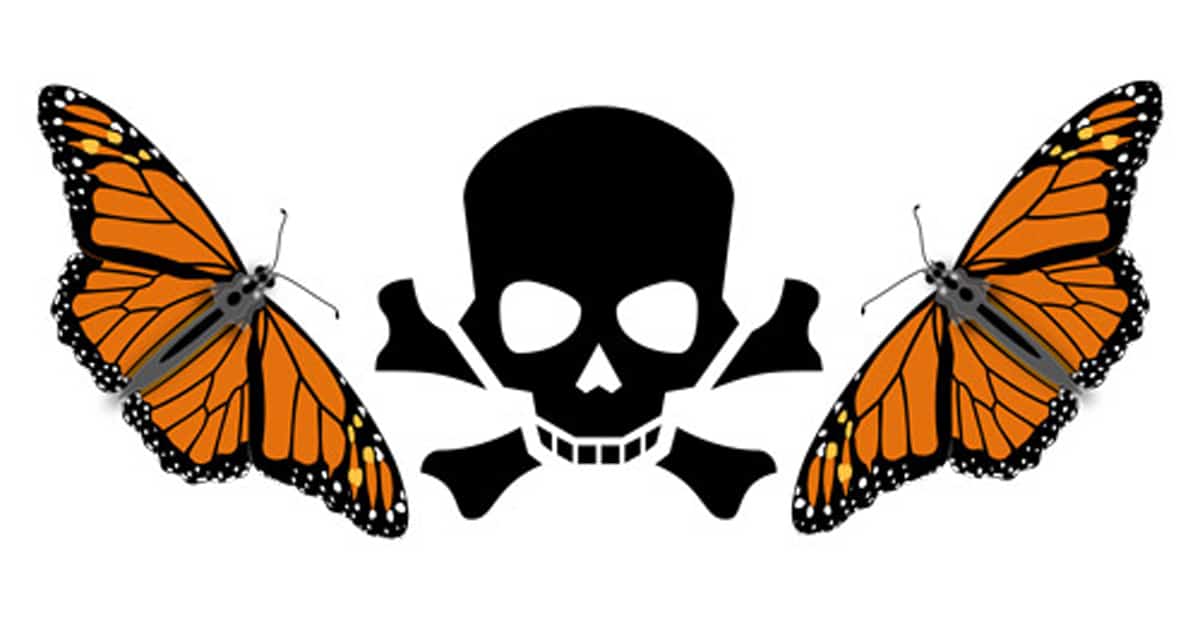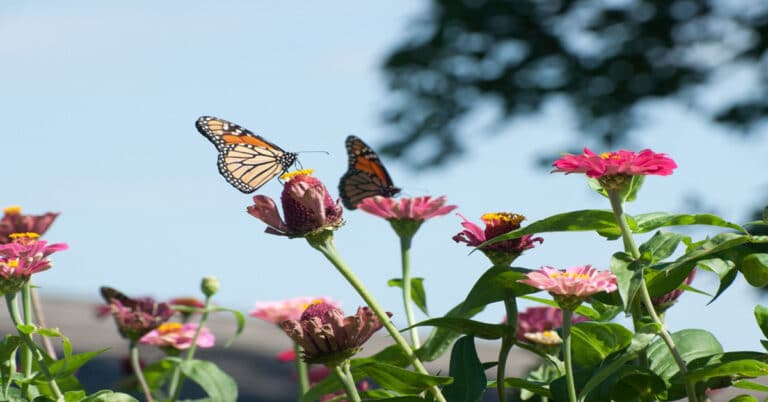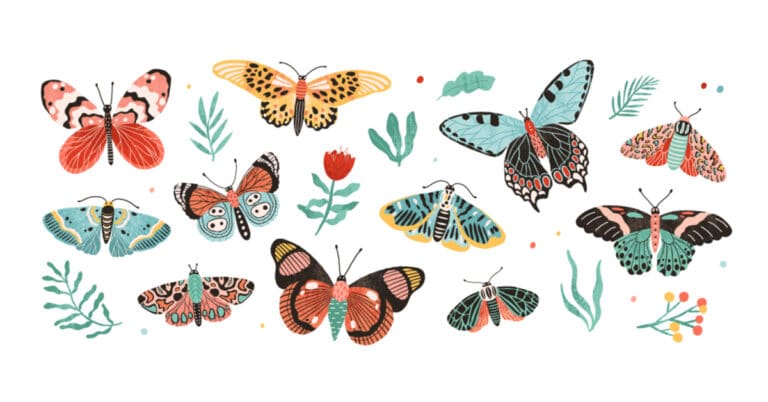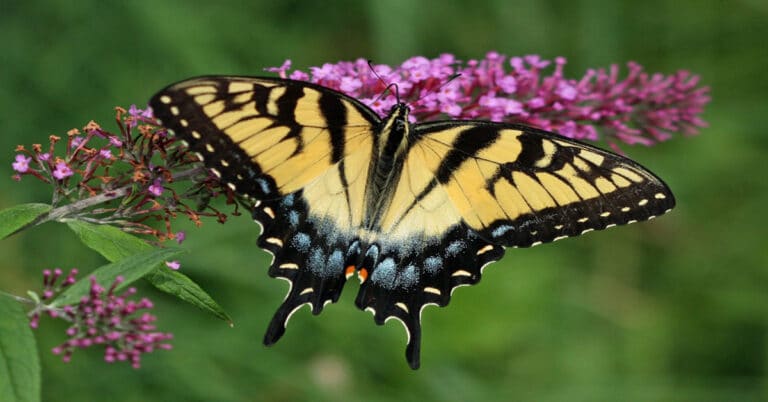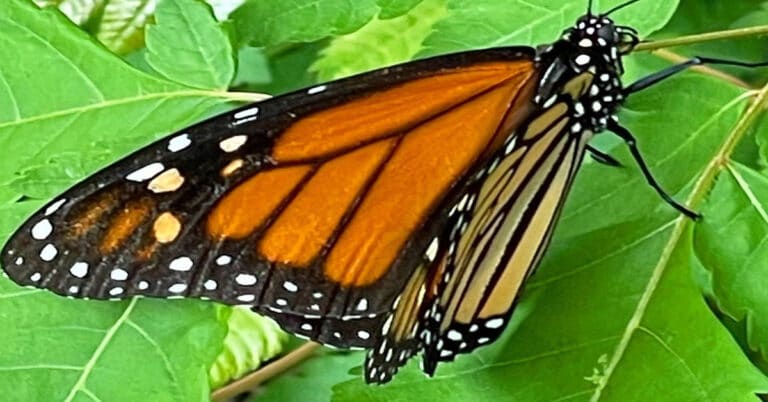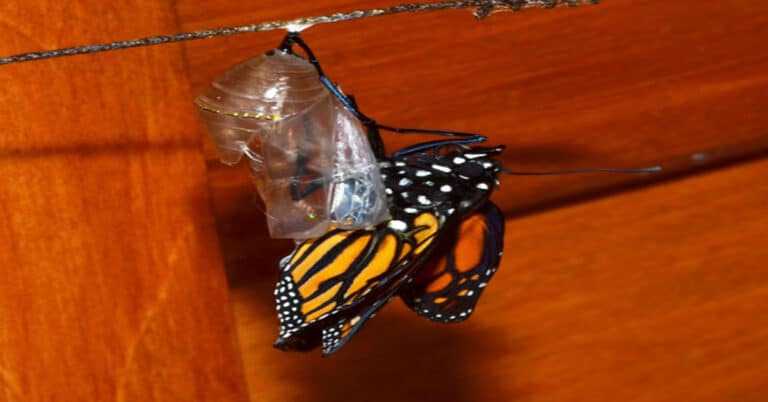Are Monarch Butterflies Poisonous?
Monarch Butterflies are lovely to look at, but poisonous to eat. Animals that eat other butterflies seldom die after eating a Monarch but seem to feel sick. Predators that taste their food will spit out a Monarch Butterfly. If they have the ability to vomit, after swallowing a Monarch predators will usually do so. They avoid eating Monarch Butterflies or other insects that have orange, black, white, and yellow coloring in the future.
Butterflies benefit from looking poisonous to birds
Avoiding Monarch Butterfly colors is a good idea for anyone who eats insects because vivid patterns in orange, black, yellow, and red are the warning colors for many species that contain toxins. Some of these biochemicals have been scientifically studied. We can say that Monarch Butterflies are poisonous because they absorb chemicals called glycosides, more specifically cardenolides, from milkweed, which is what Monarch Butterflies eat during the caterpillar stage. Milkweed is mildly toxic to almost every animal except Monarchs, too.
We used to think that the Monarch Butterfly look-alike species, the Viceroy Butterfly, is edible but gets some protection from predators by looking like the Monarch. This would have made the Viceroy an example of Batesian mimicry. We now know that although Viceroys are avoided by birds that have tasted a Monarch, Viceroys make many predators sick too. Monarchs are also avoided by birds that have eaten a Viceroy. Both Monarchs and Viceroys are examples of Mullerian mimicry.
Some of those other butterflies that people sometimes think might be mutant Monarchs, in the swallowtail and Vanessa groups, also tend to be toxic to predators. Eastern Tiger Swallowtails are unusual because the species benefits from two different kinds of mimicry. All male Eastern Tigers and some females resemble Monarchs enough to discourage some birds. Though their bright yellow and black wings have different shapes and striping patterns, some confused people think of them as yellow monarch butterflies, and so, apparently, do birds. Other females resemble a smaller Swallowtail, the Pipevine Swallowtail, which absorbs different toxins from a different food plant. Their glossy black wings have an iridescent blue-green gloss in most lights, which may be what confused people are calling �blue monarch butterflies, although that sounds more like a nickname for Speyeria diana. Though Swallowtails arent good food for most birds or animals either, partly because they are composters, Eastern Tigers clearly get some benefit from having birds mistake them for other butterflies that are more toxic than they are. Individual Tigers who resemble Pipevine Swallowtails are much more numerous in places where real Pipevine Swallowtails live.
Viceroy Butterfly caterpillars eat willow, poplar, and cottonwood tree leaves. They absorb salicylates, chemicals similar to the active ingredient in aspirin. This gives them a bitter taste and makes them poisonous to some predators. Adult Viceroys are composters and may pick up additional toxins and disease germs from the decaying material from which they drink liquid residues.
One of the perils of Monarch Butterfly migration is that Monarchs lose some of their toxicity during hibernation. By early February, mice who invade Monarch Butterfly Sanctuaries may be able to eat one butterfly and still feel interested in eating another one. Fortunately for the butterflies, the weather will soon be warm enough for them to fly away. Monarchs who have hibernated benefit from their resemblance to Monarchs who have not. Birds might be able to eat these individuals, but the birds do not know this.
Humans benefit from looking closely at butterflies
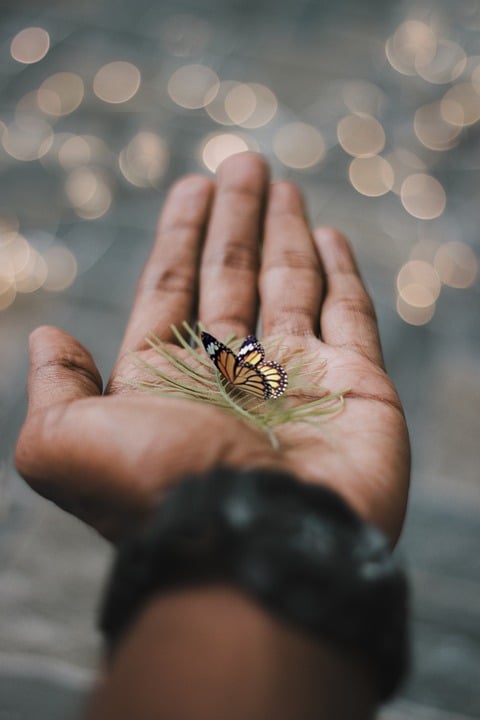
No matter how hungry we are, few humans have ever wanted to eat butterflies. If we did, all of them would be likely to give us feelings of butterflies in the stomach or worse. For us the benefits of close observation of butterflies are different. More accurate butterfly drawings make it easier to share information about butterflies. Accurate information about butterflies helps us recognize their value as pollinators. Additionally, while it’s possible to create art with fantasy butterfly images that don’t resemble any real species, knowing how to draw Monarch Butterflies and other species in lifelike ways adds value to visual artwork.
Scientists classify butterfly species in families based on their shapes. When you compare species, you notice that Monarch Butterfly outlines and wing venation patterns are different from their look-alikes. The Viceroy’s wings have black transverse bands that run across their other black stripes. Monarch Butterflies’ forewings are broader than Viceroys.
In swallowtail species that have striped wings, wide black or brown stripes often cross out the pattern the veins form in each wing. Monarchs’ narrow black stripes outline the pattern the veins form in each wing.
Anglewing butterflies get their name from the angular outlines of their wings. Painted Ladies, the orange-colored Vanessa species that can look like small, pale Monarchs from a distance, have completely different outlines and patterns when you look at them closely, with spots rather than stripes. Painted Lady caterpillars eat a variety of wildflowers, especially thistles. The adult butterflies drink nectar from milkweed and other flowers, as Monarchs do.
Speyerias, a genus in a group called Fritillaries, usually have orange wings with darker and paler spots and rounded outlines. They are smaller than Monarchs. The species Speyeria diana is sexually dimorphic. Males are smaller than females. Males in this species have orange wings with slightly darker veins but have dark patches near the body rather than dark borders like Monarchs. Females in Speyeria diana are bigger than males and have blue wings. As caterpillars they eat violets; as adults, they are both pollinators and composters.
Even if Monarch Butterfly tattoo transfers are small and use only blue or black ink, they can be recognized as accurately drawn Monarch Butterfly images, or not.
Some variations in butterflies’ wing patterns may be simply individual variations. Some tell us something about the butterflies. Individuals exposed to colder temperatures tend to be smaller and paler, and in some Admirals and Swallowtails, the difference is big enough that different generations used to be considered as different species. Male and female Monarch Butterflies look very much alike, but males are usually a little bigger, and male Monarch Butterflies have a dark spot on the upper surface of each hind wing.
Several books, websites, and coloring pages illustrate the process of how to draw Monarch Butterflies. If you want unique images, since this species is so vividly marked, a clear PNG photo can become an easy guide to drawing accurate images of any stage in the Monarch Butterfly life cycle.
When adding Monarch Butterfly pics to original fashion designs, you may want to think creatively about the fact that many people avoid wearing orange. Monarch Butterfly earrings and other Monarch Butterfly costume jewelry do not necessarily have to match clothing. To design a Monarch Butterfly shirt or dress you might want to remember the way Monarchs are often observed in real life�fluttering around a flower, often a pink or red flower, or a sandy brown puddle, among a variety of smaller butterflies. Snapshots of one or two Monarchs flying across a background of the blue sky also generate attractive designs. White Monarch Butterflies may suggest additional ideas for clothing designs, or just for appealing computer wallpaper.

Nato is a content writer and researcher with a background in psychology who’s eager to explore the wonders of nature. As a travel enthusiast and animal lover, she hopes to inspire others to discover and cherish the beauty and importance of the natural world.

